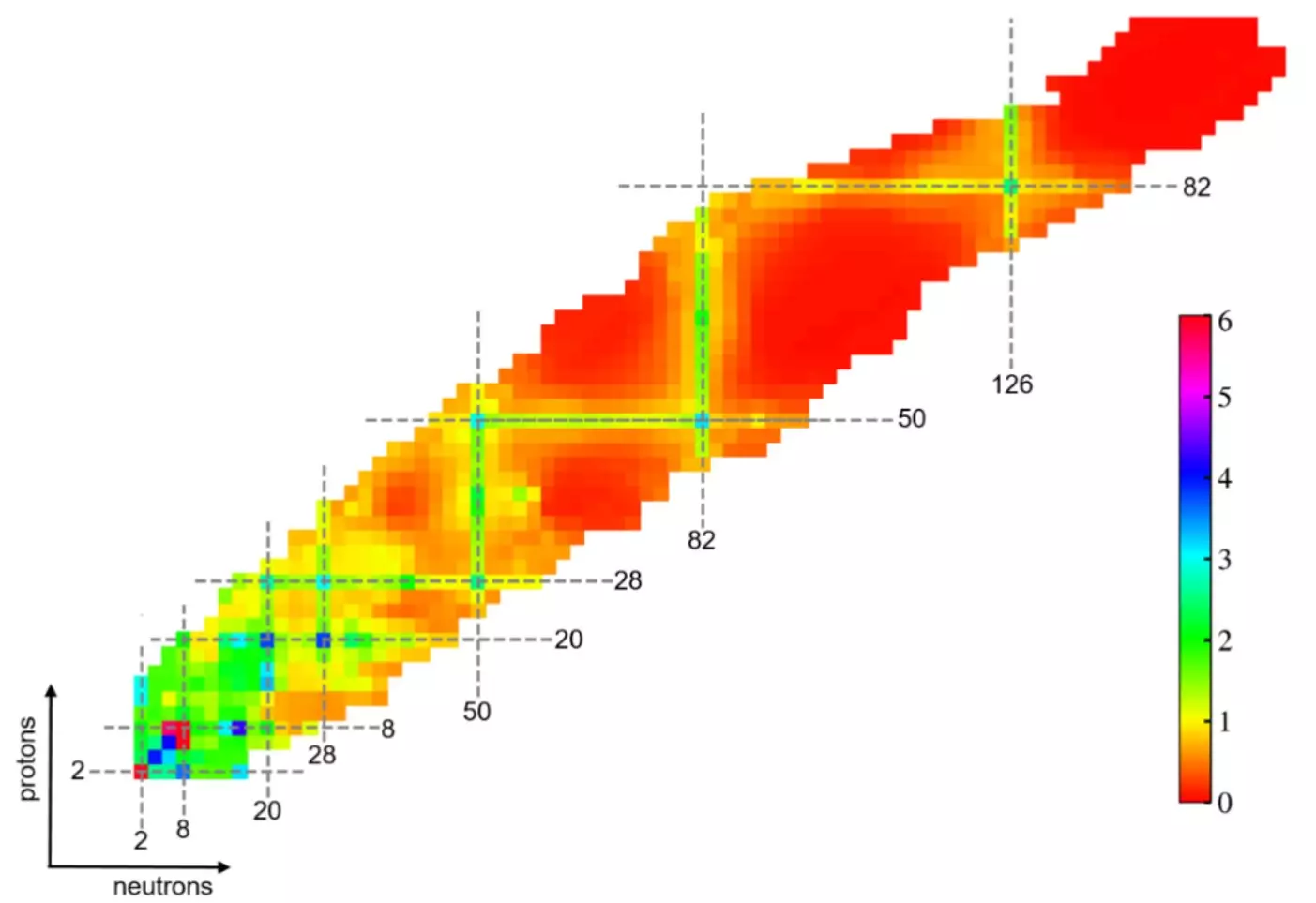Recent advancements in nuclear physics have shed new light on the intricate fabric of atomic nuclei, particularly those that lie far from the so-called stability valley. A collaborative research effort from the Institute of Modern Physics (IMP) of the Chinese Academy of Sciences, Huzhou University, and the University of Paris-Saclay has utilized state-of-the-art machine learning techniques to probe the evolution of shell structures in these unstable nuclei. This pioneering study, published in Physics Letters B, provides significant insights into the behavior of certain magic numbers, reshaping our understanding of nuclear stability and the fundamental characteristics of atomic matter.
Understanding Magic Numbers and Their Role
Magic numbers play a pivotal role in nuclear physics, acting as markers of stability and influencing how protons and neutrons arrange themselves within the nucleus. The archetypal magic numbers—2, 8, 20, 28, 50, 82, and 126—established in the 1930s, signify particularly stable configurations where these nucleons are maximally packed. However, emerging research suggests that these numbers might not be universally applicable. As nuclei deviate from stability, questions arise regarding the persistence of these magic numbers and the potential emergence of new ones. The implications of these shifts are profound, as they could challenge existing theoretical frameworks and even lead to discoveries of novel physical phenomena.
The application of machine learning in this domain of nuclear physics marks a significant methodological shift. The researchers have ingeniously leveraged machine learning algorithms to assess various features of atomic nuclei, successfully reproducing experimental data linked to low-lying excited states and electromagnetic transition probabilities. The results have generated excitement within the scientific community, as the accuracy of these findings surpassed those produced by conventional nuclear models. Associate Professor Lyu Bingfeng highlighted the potential these advances hold for redefining our understanding of the fundamental properties of atomic nuclei.
One of the standout revelations of this study is the identification of a double-magic nature in tin-100, reinforcing the stability associated with this nucleus. Conversely, the findings indicate that oxygen-28 experiences a collapse of the traditional neutron magic number 20. This discovery underscores the fluidity of nuclear characteristics and the necessity for ongoing research to comprehend how these properties evolve under different circumstances. The revelation challenges longstanding assumptions and necessitates a reevaluation of nuclear models that have been regarded as cornerstones of our understanding.
The Path Forward: Implications for Experimental Physics
The implications of this research extend far beyond theoretical discourse. With the newfound insights gained from machine learning, researchers are poised to guide future experimental measurements at rare-isotope facilities worldwide, such as the High Intensity Heavy-Ion Accelerator Facility in China. These facilities enable the exploration of low-lying excited energies and electromagnetic transition properties, providing a unique platform for testing the predictions made by the new machine learning-enhanced models. The ability to predict and analyze these complex nuclear behaviors can lead to innovative experimental designs, driving forward the quest for deeper knowledge in nuclear physics.
This groundbreaking study is not only a testament to the power of interdisciplinary approaches, blending traditional physics with cutting-edge technology, but it also signifies a new frontier in our comprehension of the atomic nucleus. The findings compel us to reconsider established theories, pushing the envelope on what we know about nuclear stability, magic numbers, and the intricate dance of protons and neutrons. As we move forward, the continued integration of machine learning into nuclear physics research promises to illuminate further the mysteries of atomic structure, ultimately enriching our understanding of the universe.

